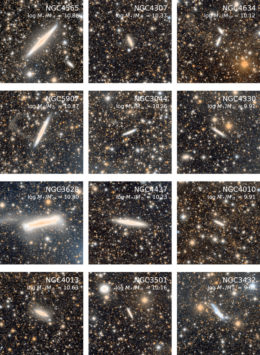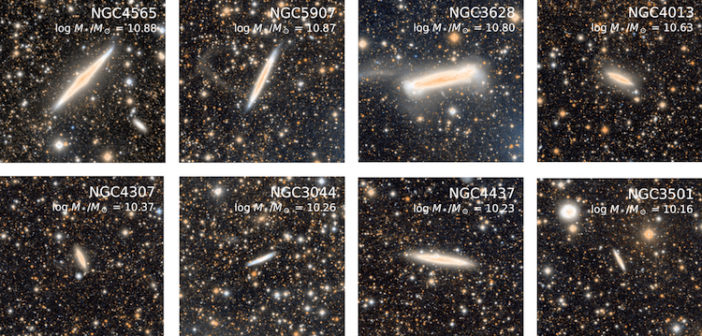
The 12 galaxies in the sample, ordered from high to low stellar mass. Click for high-resolution version. [Gilhuly et al. 2022]
Studying galaxy halos is key to understanding how galaxies form and evolve. These diffuse, extended regions contain clues to a galaxy’s past interactions, such as elongated streams of stars that mark the capture of globular clusters or satellite galaxies. However, because halos are faint and can spread a great distance beyond the luminous disk of a galaxy, observing them can be challenging. A team led by
Colleen Gilhuly (University of Toronto, Canada) used the Dragonfly Telephoto Array to survey a dozen nearby edge-on galaxies, pictured above and to the right, and measure the starlight coming from each galaxy’s halo — and, by extension, estimate the mass of the halo stars.
Gilhuly and collaborators found that the stellar halo mass fractions (the mass of stars in the halo compared to the mass of stars in the galaxy as a whole) varied widely among the galaxies in their sample, but the overall mass of stars in these galaxies was correlated with the masses of their stellar halos. To learn more about this survey of nearby galaxies, be sure to check out the full article below!
Citation
“Stellar Halos from the Dragonfly Edge-on Galaxies Survey,” Colleen Gilhuly et al 2022 ApJ 932 44. doi:10.3847/1538-4357/ac6750

